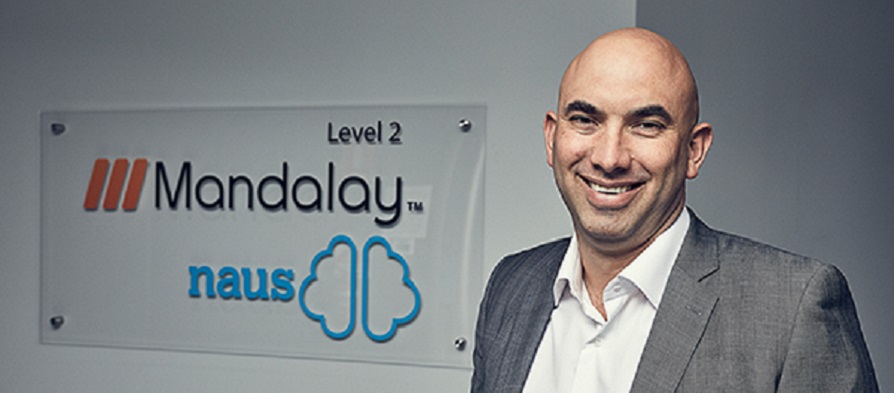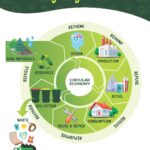The Digitisation of Waste

July 19, 2017 by Waste Management Review
Software company Mandalay Technologies asserts that an opportunity exists for the waste management industry to improve its business operations, including tracking waste.
Industry 4.0 may lead to greater efficiencies in Australia’s manufacturing sector.
Described as the “fourth industrial revolution” by the Australian Government’s Department of Industry, Innovation and Science, the concept refers to the current trend of continued technological improvements and digitisation in manufacturing. While the term “Industry 4.0” was created to define a developmental stage, the progress represents a discussion that is now well underway.
Fuelled by rising data volumes, computational power and analytics, Industry 4.0 could well shake up the manufacturing sector. The Federal Government’s peak non-government standards development body in its Industry 4.0 Recommendations Report earlier this year called for a common set of standards to encourage the integration of physical and digital records. The report argues standardisation is of central importance as it involves networking and integrating several companies through a common resource.
In Australia’s waste management sector, technology entrepreneur Simon Kalinowski sees huge potential for a similar discussion.
He believes that the waste industry needs to be proactive and embrace technological improvements and digitisation.
“There’s an opportunity to be proactive in this space with technology – a lot of time in the waste sector is spent trying to identify issues after they occur, rather than before.”
He says soft technology, which involves collaborative planning for the delivery of technological devices, is playing a much bigger part in industries such as the manufacturing sector and it’s progressing in waste, albeit slowly.
The Mandalay Technologies Managing Director has spent the past decade working with Australia’s waste management industry to bring their operations into the 21st century.
In this age of big data, Simon believes the industry has been slow to respond and there are significant opportunities for real-time analytics achieved through real-time data integration.
He argues that traditionally, the various functions and roles within the supply chain has operated as an isolated entity.
Each role within the waste management sector has its own profile of data manually generated by stakeholders, including finance, sales and regulatory authorities such as the state’s environmental protection authorities (EPAs). He says the ability to monitor data in real time and collaborate with other sectors of the industry will prevent errors and reduce double handling.
“Historically data has been seen, particularly by private companies, as being a competitive advantage and I think to a certain extent it has been. But as industry continues to evolve, the need to collaborate and transact digitally will mean your ability to share data, particularly with customers, will be necessary.”
It comes as customers expect greater accuracy and transparency as to what is happening with their waste. Simon explains that technology also provides an opportunity for organisations to innovate with lower capital investment and to meet consumer driven demands for more agile day-to-day transactional requirements.
He says technology platforms such as Rubicon Global are examples of this, and are essentially a competitor to most traditional waste operators.
Waste industry specialists Mandalay Technologies has been at the forefront of driving an awareness of data since 1998.
Based in South Brisbane, the company has provided a range of data-based solutions, assisting small regional facilities through to highly complex large volume automated facilities. Simon says one example of the need for data integration is auditing conducted at waste management facilities across Australia.
He argues that facilities such as waste transfer stations should have the capacity to verify their drivers and enter payload data prior to arrival instead on site. The core issue with data quality, he says, is that there are multiple stakeholders working across the supply chain, leading to possible errors.
“We need to change the process from a data entry exercise to a data verification exercise.
“We can draw on our experiences from the logistics industry, where we have essentially touch free transactions. In this sector, often they already know the vehicles, the driver and the profile of the load prior to the vehicle’s arrival.”
He argues another crucial issue is the tracking and movement of waste.
“If you look at New South Wales, they do extensive amounts of compliance work at a government level to try and reconcile the movement of waste between facilities and that manual cost is essentially a costly burden on all of those roles.
“Technology has a big role to play in removing that administrative burden for any sized business.
“We’re seeing opportunities to reduce the burden on stakeholders by engaging with state authorities such as the EPA, to reduce the effort to access the right information and hopefully that approach can be consistently adopted nationally.”
Through engagement with bodies such as the NSW EPA, Simon foresees an increase in regulation and compliance, which he says should not be viewed as negative.
He says a centralised system will allow government departments to focus on other problem areas.
When it comes to advancing this cause, Simon says he is surprised at the lack of awareness surrounding the mobility of waste.
“People still view it as a static supply chain and yet it is increasingly dynamic. There is a lot of talk about the movement of waste interstate, but there’s a lot more waste and material that’s not talked about.”
Related Posts

Published: December 15, 2023
The Right To Repair Movement Is Alive And Well In Mullumbimby!
Read more
Published: November 29, 2023
Embracing the Circular Economy: A Comprehensive Guide to the 7Rs
Read more
Published: October 17, 2023